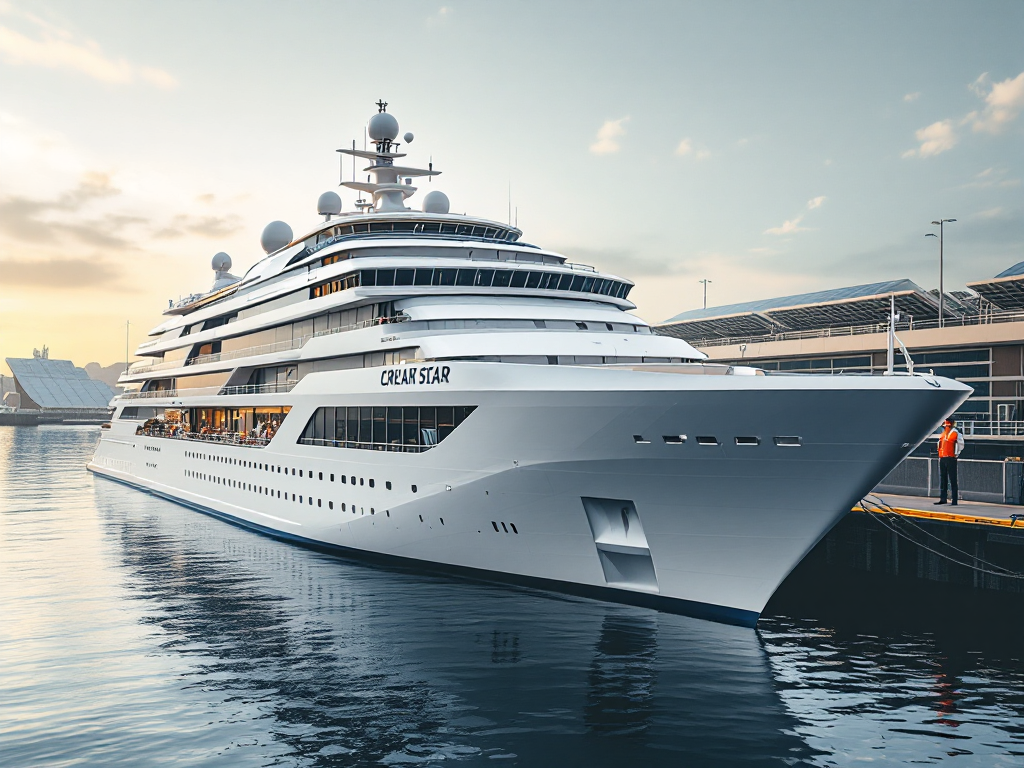Viking Libra Marks a New Era in Sustainable Cruising
Viking Cruises and Italian shipbuilding giant Fincantieri have announced a significant leap forward in sustainable maritime travel with the construction of the world’s first hydrogen-powered cruise ship, the Viking Libra. Scheduled for completion and delivery by late 2026, the Viking Libra represents an unprecedented advance in cruise ship technology designed to operate entirely emissions-free. This innovative vessel is currently under construction at Fincantieri’s Ancona shipyard in Italy, emphasizing a strategic shift towards environmentally responsible cruising.
The Viking Libra, boasting a gross tonnage of approximately 54,300 tons, is designed to host 998 guests across its 499 upscale staterooms. This positions it firmly as a small ship within Viking’s fleet, tailored for travelers seeking intimate, luxurious, and eco-friendly cruise experiences. The groundbreaking propulsion system, developed by Fincantieri’s advanced propulsion subsidiary, Isotta Fraschini Motori, will harness liquefied hydrogen and fuel cells, capable of producing up to six megawatts of power. This technological advancement not only propels the ship but also powers its onboard electrical systems, enabling emission-free operations suitable for sensitive marine ecosystems previously inaccessible to traditional cruise ships.
Fincantieri’s CEO, Pierroberto Folgiero, emphasized the importance of this development, stating:
“The Viking Libra marks a substantial step toward shaping the future of sustainable maritime transportation and underscores our commitment to pioneering innovation and environmental responsibility.”
The partnership between Viking and Fincantieri has been active in hydrogen technology experimentation since the launch of Viking Neptune in 2022, underlining their commitment to continuous research and development for renewable maritime solutions.
Ambitious Growth Strategy and Fleet Expansion
The announcement of Viking Libra is part of a broader strategy by Viking Cruises, spearheaded by founder and CEO Torstein Hagen, to significantly expand and modernize its ocean-going fleet. This ambitious plan involves the construction and commissioning of a total of 39 new vessels through 2031, signifying one of the most comprehensive expansion efforts within the cruise industry. Following the Viking Libra, Viking is preparing the Viking Astrea, a sister ship also utilizing hybrid hydrogen propulsion technology, scheduled for delivery in 2027.
Moreover, contracts have been signed for the construction of two additional ocean cruise ships, due for delivery in 2031. Viking has further provided options for two more ocean ships to be delivered in 2033, highlighting their aggressive push toward becoming leaders in environmentally sustainable maritime tourism. By the year 2031, Viking’s ocean fleet is expected to grow to a total of 21 vessels, significantly expanding its capacity and operational reach.
This strategic expansion aligns with a broader trend in the cruise industry toward embracing environmental sustainability and reducing carbon footprints. With new regulatory standards emerging worldwide, demanding stricter emissions controls and ecological protections, Viking’s proactive investment in hydrogen technology positions the company ahead of anticipated compliance measures. This forward-looking strategy ensures Viking Cruises maintains its competitive edge, appealing particularly to environmentally conscious travelers and securing long-term operational viability and market leadership.
Industry observers have noted that the cruise line’s transition to hydrogen power could serve as a catalyst for broader changes within maritime sectors, influencing other operators to adopt similar sustainable technologies.
Historical Context and Broad Industry Impact
The move toward hydrogen propulsion by Viking Cruises is part of a greater global shift in maritime industries toward sustainable fuel technologies. Historical reliance on heavy fuel oils and diesel, major sources of greenhouse gas emissions and air pollutants, has increased scrutiny and regulatory pressures on maritime entities. According to the International Maritime Organization (IMO), international shipping accounts for about 2-3% of global greenhouse gas emissions, prompting extensive global initiatives aimed at decarbonizing the sector.
Hydrogen has emerged as a promising fuel alternative due to its environmental cleanliness, producing only water as a byproduct when used in fuel cells. Despite challenges associated with hydrogen storage, infrastructure, and production costs, recent technological advancements and increased governmental support have begun to mitigate these barriers.
Maritime analyst Sara Di Giovanni, commenting on the potential industry-wide repercussions, noted:
“Viking Cruises’ leap into hydrogen technology may represent the tipping point the shipping and cruise sectors need to accelerate their green transformation. This high-profile deployment may encourage innovation, investment, and regulatory support across global maritime industries.”
The European Union, along with governments in the United States, Japan, and South Korea, has already begun significant investments in hydrogen infrastructure and research, viewing hydrogen as critical to achieving their long-term carbon reduction goals.
In addition to environmental benefits, Viking’s initiative into hydrogen propulsion is expected to stimulate economic growth and employment within the renewable energy and maritime engineering sectors. Orders for new, technologically advanced ships like the Viking Libra and Viking Astrea represent substantial economic activity for shipyards and suppliers specializing in renewable technologies and components.
Ultimately, the Viking Libra’s launch will not only represent a significant technological achievement but will also set a precedent for sustainable cruising worldwide, potentially ushering in a new era of emission-free maritime travel. Viking Cruises’ aggressive push into hydrogen-powered vessels aligns with broader global efforts to combat climate change, reduce reliance on fossil fuels, and promote sustainable development across the maritime industry and beyond.


